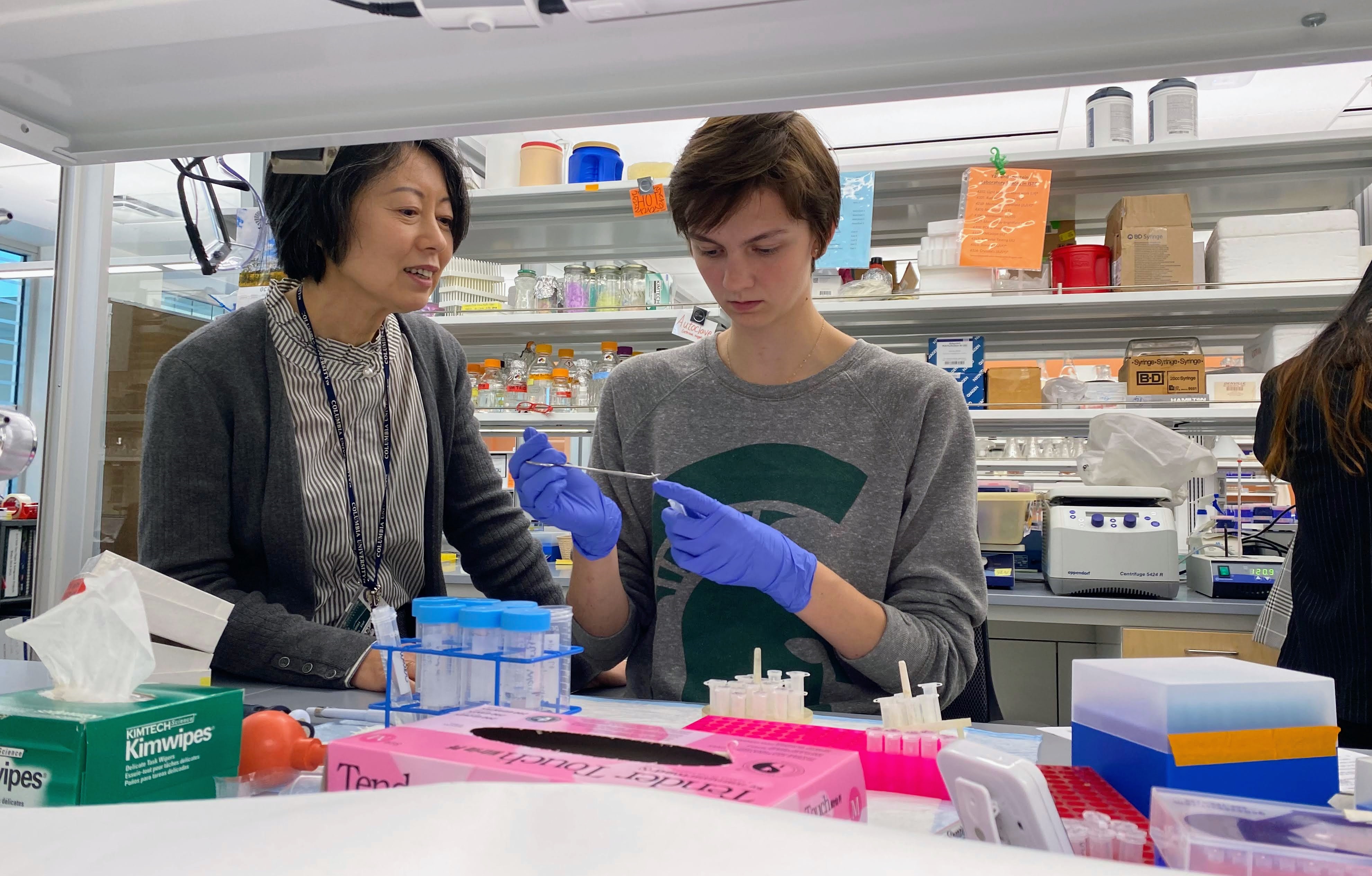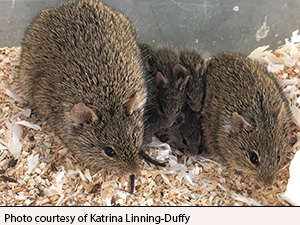MSU Psychology Research Shows Daylight Has Big Impact on Cognitive Functions
November 1, 2022 - Shelly DeJong
 Imagine you are in a laboratory room watching two African grass rats trying to navigate through a maze. One grass rat moves through the course quickly and finds its way out easily. The other grass rat struggles and cannot figure out how to get out of the maze. You wonder why one navigates it so easily and the other cannot. You might be surprised to find out that the only factor that changed for each grass rat was light exposure.
Imagine you are in a laboratory room watching two African grass rats trying to navigate through a maze. One grass rat moves through the course quickly and finds its way out easily. The other grass rat struggles and cannot figure out how to get out of the maze. You wonder why one navigates it so easily and the other cannot. You might be surprised to find out that the only factor that changed for each grass rat was light exposure.
Psychology professor Lily Yan, Ph.D., and her team of researchers are researching with grass rats to understand how light modulates brain functions and behavior. African grass rats are diurnal rodents, so they have similar sleep patterns to humans of sleeping at night and being awake during the day. This allows for much more accurate comparisons between grass rats and humans over the typical lab mice who are not diurnal.
In her experiment, Dr. Yan exposes one group of grass rats to dim light and the other to bright lights to mimic winter and summer light conditions for four weeks. In addition to the maze task, the researchers also study the rats’ brains, specifically the hippocampus which is important for memory; they found nearly 30% reduction in the connectivity of neurons in the hippocampus for the grass rats that are exposed only to dim light. Recent work from graduate student Allison Costello has also found that winter-like dim light conditions lead to increased inflammatory status in the hippocampus and other brain regions involved in regulating mood and cognitive function.
The grass rats in the dim light group were exposed to 50 lux lighting, similar to the lighting in a typical family room in a house. The grass rats in the bright light conditions were exposed to 1000 lux, similar to the lighting in a department store. The outdoor light level on a cloudless day is roughly 10,000 lux.
“It’s not a huge difference between the dim and bright light conditions,” said Dr. Yan. “But behaviorally and in the brain, we’ve found significant impacts on cognitive functions.”
The impact on humans
With winter nearing, the days continue to get shorter and shorter. Many people may begin noticing a loss of energy, trouble focusing, and difficulty with their memory. Over 10 million Americans have Seasonal Affective Disorder (SAD), a type of depression during the fall and winter months when access to light is limited. This weekend, clocks will fall back an hour and the days will darken earlier.
“People who wake up early in the morning may benefit from the morning light, but the time change can be particularly bad for evening-type people who do not get the advantage of an additional hour of daylight in the morning,” said Dr. Yan.
Dr. Yan sees how continuing this research could have a direct impact on people who are struggling with cognitive functions.
“Light not only affects our mood but it also affects our cognitive functioning including learning memory,” said Dr. Yan. “If we can figure out why we feel happier on a bright, sunny day, we can then try to target the system and help people who have seasonal depression. If we know how light modulates cognitive function, we can target dementia prevention.”
She also hopes to collaborate with the lighting industry in the future. Different lighting types have different wavelengths and intensities, so additional research is needed to see their impact on the brain. For example, many people turn to therapy lights during the winter months, but most studies on therapy light effectiveness have been done with nocturnal mice which do not necessarily translate to diurnal humans, said Dr. Yan.
Although the level of effectiveness is still in question, Dr. Yan still recommends trying a therapy light. Even better than that, though, she suggests spending more time outside even if it is an overcast day.
“Try to spend more time outside, even 15 to 30 minutes,” said Dr. Yan. “Outdoor lighting is always better than indoor lighting. We can easily get 10,000 to 20,000 lux of light even on a cloudy day.”
Dr. Yan said that cognitive functions do not adapt to dim lights over time.
“Over time, your visual perceptions can adapt so it doesn’t feel that dark anymore, but that’s the visual system playing tricks on us. Our body is still tracking how much light we got,” said Dr. Yan. “If I sit in my living room, I feel fine. But when I measure the light in that room, I know it is not enough for my brain.

A better model than mice
Dr. Yan was trained in the circadian field, so she studied circadian rhythms and how they are regulated internally. Before she came to MSU, she was interested in how light affects moods, motivations, and energy levels, but her research was limited since she only had nocturnal rodents to work with.
When she came to MSU, she had the opportunity to work with diurnal grass rats from a breeding colony that has been maintained at MSU since 1993. They currently have 200-300 grass rats in their colony.
"This colony is a unique resource that MSU has. It is important for biomedical research to work with this animal,” said Dr. Yan. “It is a much better model than mice.”
Dr. Yan’s lab recently received funding from the College of Social Science’s Faculty Initiatives Fund and an NIH R21 award. With those funds, she started a project developing the first genetically tractable diurnal rodent model using diurnal grass rats.
“It’s going to open the door of using these animals for important translational research,” said Dr. Yan.

